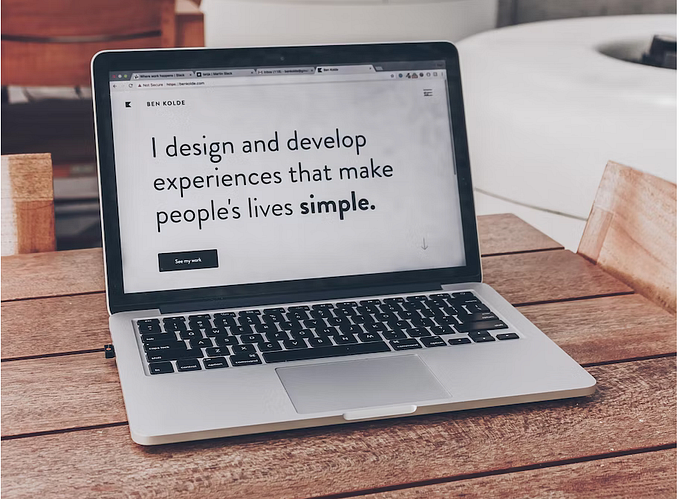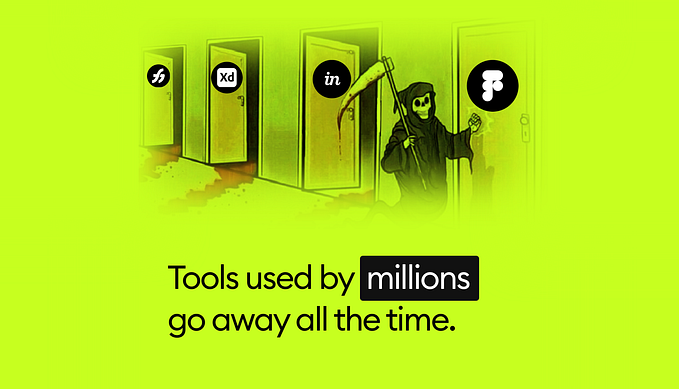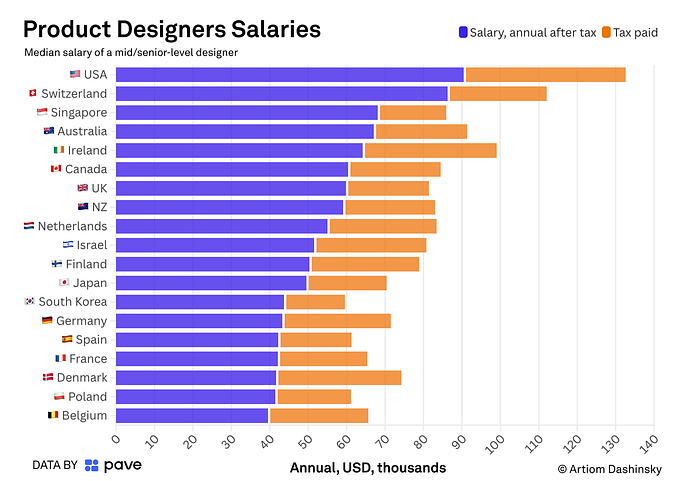How I used Design Thinking to make pitches feel like a fairy tale

Once upon a time, there was a Copywriter who worked at one of the world’s leading public relations (PR) firms. Every day, she would work on pitch after pitch after pitch. It was hard. Thankfully, she had her friends, the rest of the creative department, to help her.
One day, the Copywriter decided to consciously apply Design Thinking (DT) to all the pitches she was a part of. Using what she learned from Hyper Island, she started adopting the iterative mindset to not only work towards a happily ever after or win, but to ensure that the pitching process was more enjoyable, like a Disney fairy tale.
Here’s how she/I did it.
1. I empathized to be the fairest of them all

It’s unfair to leave out the first stage of DT, just because you believe you know your users. Empathy helps uncover hidden insights that you may have overlooked (Hamington, 2017). In fact, all teams should challenge preconceived notions about their customers with ethnographic research (Dalton and Kahute, 2016). Empathizing is crucial. And nobody needs a mirror, mirror on the wall to see that.

Although empathy seems to be an instinctive trait that humans have, it isn’t something that’s always applied in a work context (Battarbee, Suri and Howard, 2014). Thus, empathizing should be deliberately carried out, because it’s hard to come up with solutions that have desirability, feasibility, and viability without it. Plus, disregarding this phase sounds like something an evil queen would do.

The creative department was roped in to work on a pitch for the country’s top university at the last minute. Since we were all busy handling other projects and only had two days to finish, someone proposed we rehash a proposal we did for a private university a few months prior. When I heard this, my face turned as white as snow. Sure, it’d be the quickest solve since all assets had already been developed. However, the idea left a bad taste in my mouth, as though I’d just eaten a poisoned apple.

The idea seemed unethical and I was against it. My Creative Technologist felt the same way, and together we told our Creative Director that we’d rather lose sleep than go down that route. We didn’t want to reuse concepts that were created for a different target audience. Our goal was to dwarf the competition.

The two of us carried out in-depth interviews with former students, current students, and students from other universities. We kept things informal and didn’t brainstorm for questions beforehand. When we regrouped several hours later, things were a lot clearer. Communicating with users helped identify their motivations, expectations and needs (Mootee, 2013). It also revealed unexpected nuggets of information that guided the conceptualization of innovative ideas (Pressman, 2018). What we learned not only opened our minds, but made it easier for us to kiss up to users.

In a day, we came up with two distinct concepts for the pitch. One highlighted the diversity and inclusiveness of the university, while the other showed how the university empowers students to be able to specialize in more than just one thing. Though we didn’t expound much, the clients revealed that they loved the work. One even mentioned that it was evident that we truly understood what the university stood for.
2. I saw the beauty of defining problems

Defining a purposeful problem statement is very important. And very difficult. It requires teams to synthesize observations about users, retrieved during the empathize phase, to come up with a problem that’s narrow yet broad enough, and puts the users first (Dam and Teo, 2020). Problems are often buried under too much information, so it’s vital to use questions to help frame an interesting one to inspire interesting solutions (Ingledew, 2016). Until you get a hang of it, this can be quite a beastly experience.

Without a good problem statement, it’s difficult to have direction. It’s also tough to articulate what your goal is to teammates and stakeholders to get their buy-in (Stevens, 2019). That’s why coming up with multiple solutions can never hold a candle to finding the right problem.

While working on a pitch for a campaign to raise awareness of HPV in young men, I made it a point to stay in the problem space longer than usual. My Associate Creative Directors had previously pitched for the job, but the clients had suddenly changed the target audience from men, to parents with teen sons. Since this was the department’s second attempt, I felt we needed to explore every version of the problem to ensure we nailed the correct one. Being a former teacher, I also knew that only focusing on moms and dads would be limiting. Most teenagers would never tell their folks that they’re already sexually active — this is a tale as old as time.

I conducted a survey of 96 young men with help from my two Art Directors. The results revealed a lot, like the fact that most sons would rather pay for the costly HPV vaccination themselves than let their parents know about it. We spent hours making sense of all of the data, before we deduced that young men had to be included as a target audience as well. We shared the results of our survey with the clients and they agreed with our recommendation. It was a good thing we didn’t just follow the brief blindly like sheep.

We started out with a lengthy and rather boring problem statement:
How might we get parents to know the risk of HPV, so that they‘ll protect their sons from getting infected and unconsciously spreading it?
But we eventually reframed it to:
How might we make young men and parents genuinely excited about HPV prevention on digital?
Though this reframed question kept evolving and didn’t stay the same throughout, it did lead us to come up with a refreshing campaign that’s launching soon.
3. I ideated more than once upon a dream

According to neuroscientist, David Eagleman, your first idea is unlikely to be your best one, as our brains are hardwired to choose the easiest and most efficient path (Lebowitz, 2016.) Due to this, people must defer judgment and come up with as many ideas as possible during a brainstorming session (Brown and Wyatt, 2010). The aim of ideation is quantity, not quality. Limiting creativity at this stage of DT can hurt more than pricking your finger on a spindle of a spinning wheel.
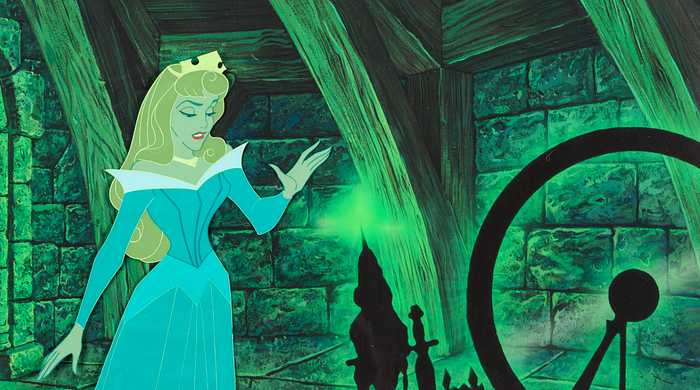
When people feel like they’re in a safe space, they’ll openly share interesting, out of this world ideas without holding back (Mattimore, 2012). Eventually, when a team has enough ideas, they can pick the best ones to build on or use the wildest ones as a springboard to real solutions (Mahon, 2011). This is why rejecting ideas too early can be like a curse from Maleficent.

While pitching for an international contact lens brand, my Art Director, Creative Technologist, and I carried out ideation like we’d never done before. Instead of just conceptualizing two developed ideas each, I suggested we do brain dumps to share as many ideas as we could. The powerful brainstorming method helps organize thoughts in our mind onto paper, to guarantee that all creativity is expressed (Mulder, 2018). Since we were working from home, we did it on Google Slides instead of on post-it notes. Regardless, the process had us feeling as free as birds.

With no pressure from each other, we came up with some of our most disruptive ideas yet. After picking three that we absolutely adored, we added more details with the ‘Yes, and’ mentality. The technique, which is borrowed from improv, allowed us to add our own flavor to each other’s ideas (Huang, n.d.).
4. I made prototyping part of my world

The word prototype comes from the Greek word prōtoupos, which basically means the first example of something (McElroy, 2017). These preliminary models are the best way to show people — look at this stuff, isn’t it neat — without even saying a word. Which really comes in handy if you ever lose your voice to a sea witch named Ursula.

You’re not supposed to do things perfectly when prototyping. The goal is to do things fast and inexpensively, so that you won’t be emotionally attached to your solution, allowing you to make changes when it fails (Collias, n.d.). Developing prototypes can help teams save time, money and effort in the long run (Collias, n.d.). In my opinion, when used correctly, it can be as powerful as King Triton.

The creative department had to work on a pitch for a global cryptocurrency derivatives exchange in just three days. We were briefed on a Wednesday, but frankly, still felt like a fish out of water on Thursday. After all, this was an industry most of us had zero experience with, so the majority of the time we were just drowning in research.
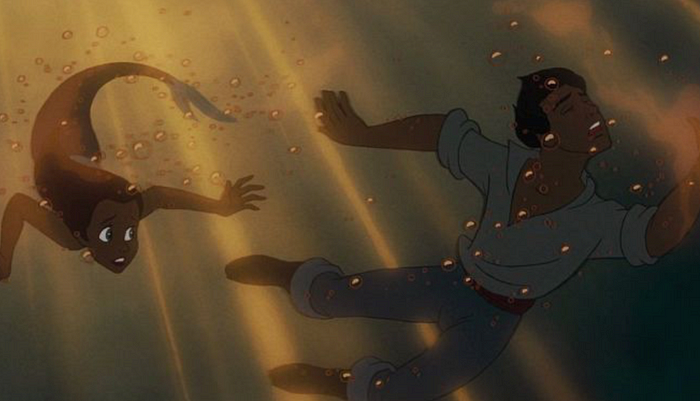
After diving into the world of crypto as much as we could, we brainstormed and narrowed down our favorite concepts. As my Art Directors had to switch back and forth between projects, I prototyped independently at first. I developed mood boards to share with the rest when they were able to get their feet wet again. These low-fidelity, physical representations made it simpler to obtain feedback and encourage communication (Dunne, 2018). As the team was able to visualize the ideas, there was no floundering around.

With precise examples, my Art Directors were able to swiftly create static mock ups in a few hours. We presented the prototypes to our Creative Director, with animation references that showed how the final work would look like. She liked them but had several suggestions on how to make even more of a splash. Since we hadn’t animated anything yet, it was easier for us to improve on the work and make interactive, high-fidelity prototypes that everyone on the team was proud of.
5. I kept testing for a Cinderella ending

When it comes to designing successful campaigns for a specific target audience, it’s important to be like Prince Charming. To continuously test that glass slipper. To search far and wide. To go back to square one if you have to. And to not stop until you have the right fit.

Honestly speaking, the testing stage of DT is one I used to skip a lot, and not just when the brief is given at the eleventh hour, close to the stroke of midnight. It’s no surprise — getting unfavourable comments about your idea is as sad as not being able to go to a ball. It feels like you’ve failed. However, in DT, failing a lot can actually lead to faster success (Serrat, 2010). So, they aren’t the ugly stepsisters in this situation.

Whether it’s good or bad, feedback is an invaluable part of the process. Without it, it’s hard to understand users, gain new insights and figure out what needs to be improved (Dam and Teo, 2020). This is because biases can make it harder for organisations to adopt fresh solutions, impeding innovation (Koria, Kotina and Prendeville, 2017). Think of feedback as a fairy godmother who helps you look at your solution critically.

I tested out testing while working on a pitch for an osteoporosis campaign, meant for senior citizens. Taking over the project halfway, I had to help build on a concept that had already been chosen by the clients during a tissue session. The first prototype had been presented — a mock up of how one ad might look like. However, even though we only had a day left to submit this, my gut instinct told me that we needed to go back to the drawing board and clean this one up.

I believed the mock up, that showed an aged woman trying to escape from bubble wrap, wouldn’t just confuse those over 50, but offend them as well. Thus, we created two other prototypes: one with a similar art direction as the first, and the other that broke the stereotypes of old age. Then, I encouraged the team to get feedback on both of the key visuals. This is because, to come up with creative solutions, we must analyze things from the user’s perspective (Nagarajan and Banerjee, 2009). It’s key to dance to their tune.

We screenshotted all the feedback we’d received and shared our findings. Some of the comments were expected, like making the text a lot larger and having translations, but others amazed us. We didn’t expect most seniors to prefer the mock up that showed an elderly man doing parkour, styled like an editorial fashion spread. Our findings helped us push our own creative boundaries and develop the rest of the campaign in a jiffy.
Conclusion: What I’d wish for if I had a genie
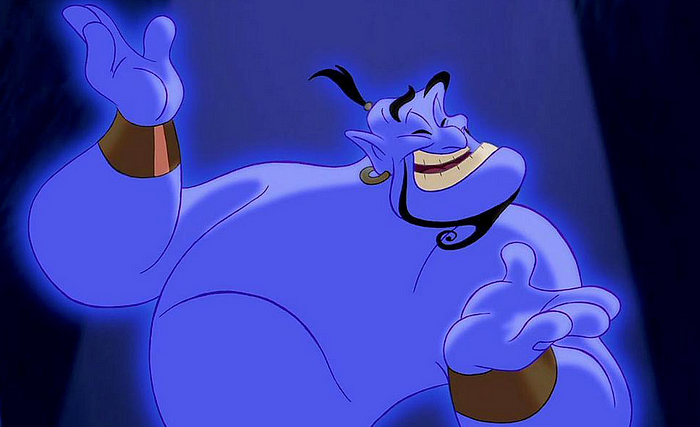
DT showed me a whole new world. A new fantastic point of view. It made pitching for new business feel more like a fairy tale, but there were still plenty of challenges. In order to make things smoother in the future, I’d rub a magic lamp for three simple wishes.
1. More time
DT isn’t a fast, one-off fix and its different phases can’t be rushed through. In instances where we had less than three days to finish, implementing DT seemed like absolute madness — especially since the creative department almost always has to handle multiple projects concurrently. Personally, I find the empathizing and testing stages to be the most difficult to pull off in a time crunch, so I would scale them down in similar circumstances. Both of them require us to wait for answers or feedback from users, who can’t just drop everything they’re doing to help us. After all, it’s not like we’re royalty like Princess Jasmine.

2. Less resistance
I chose to implement DT in my department first, because I knew that there would be significant push back if I attempted it on a larger scale. DT can feel quite radical and a lot of convincing must be done to get support from other members of the organization — who have different responsibilities and commitments to deal with as well. When carrying out my experiments, it was easy to get the other creatives on board, as most already knew about DT. However, when it came to my other colleagues, it didn’t always seem feasible. A reorientation of attitudes had to occur, and perhaps if I applied empathy and treated them as users, it would’ve been easier to appeal to them. The experience wasn’t exactly a magic carpet ride.

3. Greater management support
It’s tough to make impactful organizational change when you’re not at the top. The success of implementing DT, or any new company philosophy really, is highly dependent on support from management. Leaders can help get everyone on the same page without much friction. I plan to make a greater effort in winning over the support of department heads moving forward. During the previous pitches, I only involved these internal stakeholders towards the end, which was like having a tiger by the tail.

References
Battarbee, K., Suri, J. and Howard, S., 2014. Empathy On The Edge: Scaling And Sustaining A Human-Centered Approach In The Evolving Practice Of Design. [ebook] IDEO. Available at: <https://new-ideo-com.s3.amazonaws.com/assets/files/pdfs/news/Empathy_on_the_Edge.pdf> [Accessed 30 September 2020].
Brown, T. and Wyatt, J., 2010. Design Thinking for Social Innovation. Stanford Social Innovation Review, 8(1), p.31.
Collias, K., n.d. Unpacking Design Thinking: Prototype. [online] Knowledge Without Borders. Available at: <https://knowwithoutborders.org/unpacking-design-thinking-prototype/> [Accessed 4 October 2020].
Dalton, J. and Kahute, T., 2016. Why Empathy and Customer Closeness is Crucial for Design Thinking. Design Management Review, 27(2), pp.20–27.
Dam, R. and Teo, Y., 2020. Stage 2 in the Design Thinking Process: Define The Problem And Interpret The Results. [online] The Interaction Design Foundation. Available at: <https://www.interaction-design.org/literature/article/stage-2-in-the-design-thinking-process-define-the-problem-and-interpret-the-results> [Accessed 7 October 2020].
Dam, R. and Teo, Y., 2020. Stage 5 in the Design Thinking Process: Test. [online] The Interaction Design Foundation. Available at: <https://www.interaction-design.org/literature/article/stage-5-in-the-design-thinking-process-test> [Accessed 26 September 2020].
Dunne, D., 2018. Implementing Design Thinking in Organizations: An Exploratory Study. Journal of Organization Design (Aarhus), 7(1), pp.1–16.
Hamington, M., 2017. Integrating Care Ethics and Design Thinking. Journal of Business Ethics, 155(1), pp.91–103.
Huang, L., n.d. Ideation And The “Yes, And” Mindset. [online] Highbrow. Available at: <https://gohighbrow.com/ideation-and-the-yes-and-mindset/> [Accessed 10 October 2020].
Ingledew, J., 2016. How To Have Great Ideas: A Guide To Creative Thinking. London: Laurence King Publishing.
Koria, M., Kotina, E. and Prendeville, S., 2017. Using Design Thinking to improve Strategic Decisions during Collaborative Sensemaking. Conference Proceedings of the Academy for Design Innovation Management, [online] 1(1). Available at: <https://core.ac.uk/display/288368692?recSetID=> [Accessed 26 September 2020].
Lebowitz, S., 2016. A Neuroscientist Explains Why Your First Idea Is Hardly Ever The Best One. [online] Business Insider. Available at: <https://www.businessinsider.in/A-neuroscientist-explains-why-your-first-idea-is-hardly-ever-the-best-one/articleshow/51320881.cms> [Accessed 10 October 2020].
Mahon, N., 2011. Basics Advertising 03: Ideation. [ebook] AVA Publishing. Available at: <https://ebookcentral.proquest.com/lib/tees/reader.action?docID=4654155&ppg=1> [Accessed 10 October 2020].
Mattimore, B. W., 2012. Idea Stormers: How to Lead and Inspire Creative Breakthroughs, John Wiley & Sons, Incorporated, Somerset. Available from: <https://ebookcentral.proquest.com/lib/tees/reader.action?docID=875815>. [Accessed 2 October 2020].
McElroy, K., 2017. Prototyping for Designers: Developing the Best Digital and Physical Products, O’Reilly Media, Incorporated, Sebastopol. Available from: <https://ebookcentral.proquest.com/lib/tees/reader.action?docID=4785196>. [Accessed 5 October 2020].
Mootee, I., 2013. Design Thinking for Strategic Innovation: What They Can’t Teach You at Business or Design School, John Wiley & Sons, Incorporated, Somerset. Available at: <https://ebookcentral.proquest.com/lib/tees/reader.action?docID=1358566> [Accessed 30 September 2020].
Mulder, P., 2018. Brain Dump. [online] Toolshero. Available at: <https://www.toolshero.com/creativity/brain-dump/> [Accessed 10 October 2020].
Nagarajan, J. and Banerjee, S., 2009. Design Thinking: A Bias-Reduction Strategy For Organizational Innovation. [online] Lntinfotech.com. Available at: <https://www.lntinfotech.com/wp-content/uploads/2019/09/Design-Thinking-A-Bias-Reduction-Strategy-For-Organizational-Innovation.pdf> [Accessed 27 September 2020].
Pressman, A., 2019. Design Thinking: A Guide To Creative Problem Solving For Everyone. 1st ed. Routledge.
Serrat, O. (2010). Design thinking.Washington, DC: Asian Development Bank.
Stevens, E., 2019. How To Define A Problem Statement: Your Guide To The Second Step In The Design Thinking Process. [online] Careerfoundry.com. Available at: <https://careerfoundry.com/en/blog/ux-design/stage-two-design-thinking-define-the-problem/> [Accessed 7 October 2020].




